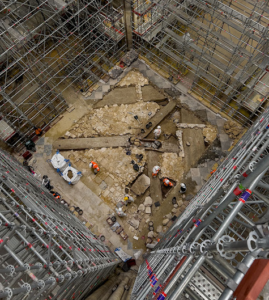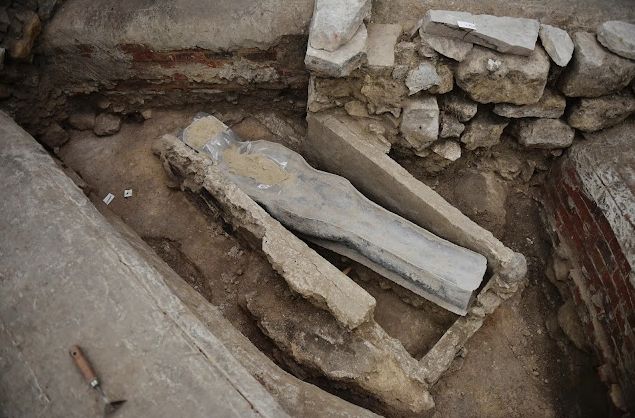Several tombs and a leaden sarcophagus likely dating from the 14th century have been uncovered by archaeologists at Notre-Dame cathedral in Paris following its devastating 2019 fire.
The burial sites “of remarkable scientific quality” were unearthed during preparatory work for rebuilding the ancient church’s spire at the central spot where the transept crosses the nave, the culture ministry announced late Monday.

The Cost of Internet Shutdowns (infographic)
Among the tombs was the “completely preserved, human-shaped sarcophagus made of lead”. It is thought the coffin was made for a senior dignitary in the 1300s—the century following the cathedral’s construction.
As well as the tombs, elements of painted sculptures were found just beneath the current floor level of the cathedral, identified as parts of the original 13th-century rood screen—an architectural element separating the altar area from the nave.
Read more: Archaeology News Network



































